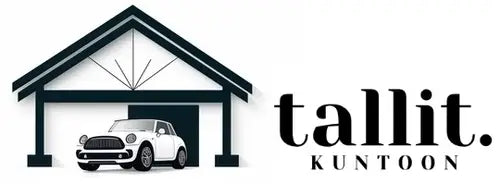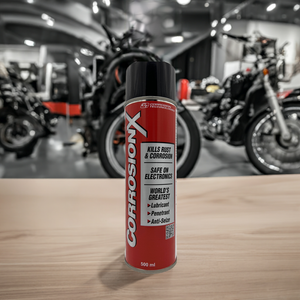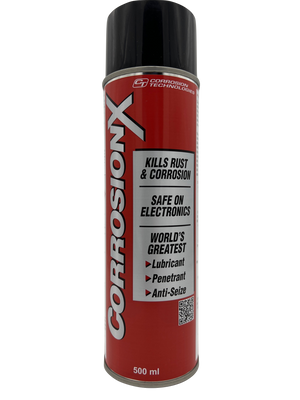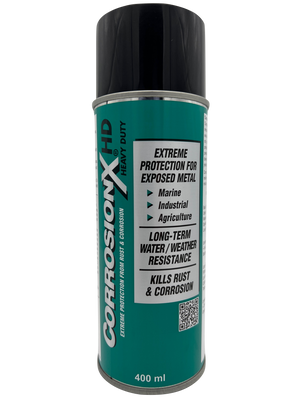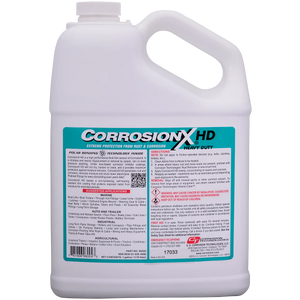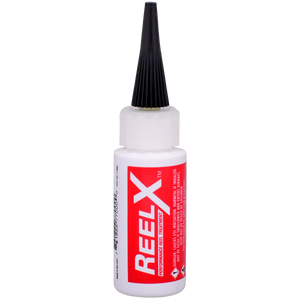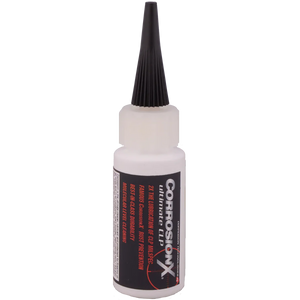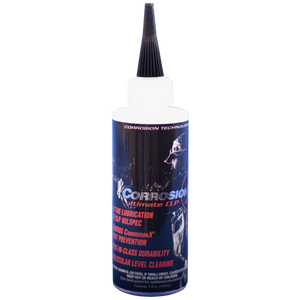Have you ever wondered how massive anti-aircraft artillery (AAA) systems manage to function smoothly under the constant stress of high-speed targeting, extreme weather conditions, and rapid-fire engagements? Imagine a colossal orchestra of metal components, each part moving in perfect harmony to create a powerful defensive force that protects airspace and strategic locations. Now think about what happens if even a single component decides to squeak, stick, or worse—corrode and break. In such critical, high-pressure environments, failure isn’t an option. That’s why a seemingly modest element—gun oil—plays a starring role in ensuring these awe-inspiring machines stay in tip-top shape and ready for the next mission.
In this comprehensive guide, we’ll delve deep into the world of anti-aircraft artillery maintenance, focusing on why high-quality gun oil is not just a recommendation but an outright necessity. We’ll unravel the intricacies of these sophisticated weapons systems, explore how harsh environments can take a toll on their components, and shed light on what sets CorrosionX for Guns apart from the rest. We’ll also take a closer look at best practices for application and why it’s crucial to maintain a routine that keeps your artillery locked, loaded, and ready to roll. And, if you’re in Finland, we’ve got good news: CorrosionX can be sourced from Tallitkuntoon—your local expert on all things CorrosionX and Swisstrax.
So, grab a cup of coffee, get comfortable, and prepare to discover everything you ever wanted to know (and maybe more) about anti-aircraft artillery maintenance and the gun oil that keeps these guardians of the skies in prime condition.
Understanding Anti-Aircraft Artillery: Beyond the Big Guns
Before we jump into the nitty-gritty of gun oil and why it’s so essential, let’s set the stage by exploring what anti-aircraft artillery is all about. Far from being “just big guns pointed at the sky,” these systems are advanced, multi-component configurations designed to detect, track, and neutralize aerial threats. Picture a track star sprinting at the sound of a starting gun—except here, the “track star” is often a rotating turret, and the race is against enemy aircraft or missiles.
Complexity Meets Chaos
What sets anti-aircraft artillery apart from typical ground-based artillery or rifles is the constant demand for precision and speed. For instance, if you watch these systems in action, you might see them swiveling and elevating at breakneck speeds to lock onto a fast-moving target. A single moment’s delay or a minor mechanical slip-up can mean the difference between intercepting a threat and allowing it to slip through. These advanced systems come loaded with high-tech sensors, radar systems, and computerized tracking components—all working in concert to ensure that the “big gun” actually hits its mark.
But, here’s the catch: the faster and more precise these systems need to be, the more stress is placed on every nut, bolt, and rotating joint. Picture a complicated Swiss watch, which needs a little lubrication to keep every tiny gear in sync. Now scale that watch up to something the size of a bus, hurl in environmental factors like dust, rain, salt spray, and dramatic temperature shifts, and you start to see how complicated maintenance can be.
Harsh Environments: The Unforgiving Reality
Anti-aircraft artillery installations rarely get to bask in the comfort of indoor storage. More often than not, they stand guard in scorching deserts, humid rainforests, salty coastal bases, or frigid arctic environments—sometimes for extended periods without a break. The Earth’s weather conditions can be brutal:
- Desert Heat and Sandstorms: Grains of sand can infiltrate the tiniest gaps, grinding against moving parts and increasing friction tenfold.
- High Humidity and Salt Exposure: Moisture and salt can encourage rust and corrosion, weakening metal components and leading to structural failures.
- Extremely Low Temperatures: Cold climates can make standard lubricants thicken or freeze, rendering them ineffective just when they’re needed most.
In these unforgiving settings, poor maintenance can rapidly turn a state-of-the-art defense system into a rusted, malfunctioning hulk. That’s why a robust maintenance protocol—fueled by high-quality gun oil—is crucial to keep the system reliable and combat-ready.
Why Gun Oil Matters in the World of Anti-Aircraft Artillery
If you’ve ever felt that satisfying relief of oil easing a squeaky door hinge, you already grasp the basics of why lubrication is key. Multiply that door hinge scenario by thousands of intricate parts, each with specific tolerances, and you start to see why gun oil takes center stage in artillery maintenance.
Minimizing Friction and Wear
The interplay of metal surfaces within an anti-aircraft gun system is akin to cogs in a massive, high-speed clock. Friction can be the silent enemy here. Excess friction translates to increased wear, higher component temperatures, and elevated odds of mechanical failure. We’re talking about finely machined parts designed to pivot, slide, and rotate with microsecond timing. Even a minute amount of wear can lead to a noticeable drop in accuracy or speed.
By carefully applying gun oil to the system, you’re laying down a friction-fighting film that keeps metal surfaces from wearing each other down like sandpaper. Over time, this translates to fewer breakdowns, lower repair costs, and more consistent performance. In a life-and-death scenario—where an incoming threat could appear at any moment—this reliability becomes priceless.
Defending Against Corrosion
Corrosion is to metal what termites are to wood—unseen at first, but incredibly destructive once it takes hold. Just as you’d treat wooden structures to fend off those wood-munching pests, you must guard metal-based artillery components against corrosion. In the case of anti-aircraft guns, even mild corrosion can mean crucial losses in structural integrity and precision.
A good gun oil forms a protective layer that wards off moisture and other corrosive elements. Think of it as an invisible shield. High-end products, such as CorrosionX for Guns, go the extra mile by penetrating deeply into the metal, ensuring lasting protection even after repeated use or exposure to harsh weather.
Enter CorrosionX for Guns: The Superior Choice for Anti-Aircraft Systems
Now that we’ve set the stage for why lubrication is so critical, let’s spotlight CorrosionX for Guns. Ever heard of a tool so good, it’s been embraced by the U.S. Armed Forces and NATO? CorrosionX isn’t just a brand name; it’s practically a legend in circles that care about prolonging the life of weapon systems. So, what’s the big deal about it, and why do experts swear by it?
Specialized Formula for Extreme Conditions
Unlike run-of-the-mill oils you might pick up at a convenience store, CorrosionX for Guns was born out of a specific need: to withstand the harshest conditions imaginable. It’s like the superhero of lubricants—capable of wicking away moisture, repelling salt, resisting high temperatures, and keeping friction at bay. If your anti-aircraft installation is perched on a remote island base surrounded by salty air 24/7, or if it’s subjected to punishing heat in desert deployments, CorrosionX for Guns is engineered to keep things moving.
In simpler terms, it won’t break down into a tacky residue or evaporate when faced with extreme heat. Nor will it become sludge in colder climates. That makes it a versatile, one-stop solution for militaries operating in global theaters where conditions can shift drastically—sometimes on short notice.
Deep-Penetrating Lubrication
One standout feature of CorrosionX for Guns is its ability to penetrate metal surfaces at a microscopic level. Think of it like a sponge absorbing water, except here it’s the metal absorbing a specially formulated oil. This deep penetration means that the protection isn’t just superficial. Even if your artillery is blasted by wind and rain, the oil remains locked into the metal, continuing to protect critical components.
This is a game-changer, especially for anti-aircraft systems that go for long stretches with minimal maintenance opportunities. Once you apply CorrosionX for Guns, you can trust that it’ll keep working behind the scenes, acting like a steadfast guard dog protecting against corrosion and friction, day in and day out.
Best Practices for Applying Gun Oil to Anti-Aircraft Artillery
Okay, so you’re sold on the importance of lubrication and might already have a bottle of CorrosionX for Guns at the ready. But how do you apply it in a way that maximizes its benefits? Here are some tried-and-true best practices for ensuring your anti-aircraft artillery gets the royal treatment.
Clean Thoroughly Before Application
Start by giving your artillery system a thorough once-over—or maybe even a twice-over. Remove any dust, sand, or old grease that could hamper fresh oil from reaching the metal. The trick is to avoid locking in contaminants beneath a layer of new oil. Think of it like painting a wall: you wouldn’t slap on a fresh coat of paint over peeling, dirty surfaces, right? The same principle applies here. A clean surface allows the new oil to adhere and penetrate properly, ensuring maximum efficiency.
Apply Evenly and Sparingly
When applying CorrosionX for Guns, or any high-quality gun oil, more isn’t always better. You want just enough to create a thin, uniform coating. Picture yourself seasoning a cast-iron skillet. You’re aiming for a nice thin layer that prevents rust and sticking, without turning the pan into an oil swamp. The same logic goes for your anti-aircraft artillery.
Focus your application on areas with high friction—like pivot points, gears, and recoil systems. Don’t forget to pay extra attention to the bore and breech if you’re working on a gun barrel system. An even, consistent coat will deliver excellent friction reduction, keep corrosion at bay, and help prevent dust or grit from accumulating.
Emphasize Key Moving Parts
In an anti-aircraft gun, certain components bear the brunt of mechanical stress: the turret ring, the elevation mechanism, and the ammunition feed system, to name a few. These parts are on the front lines of movement and are often the first to show signs of wear. Make sure you inspect these areas closely and apply adequate oil to keep things running smoothly. If you overlook them, you could end up with a jam that no one sees coming until it’s too late.
Regular Maintenance: An Ongoing Process
Maintenance isn’t a one-and-done deal. In the chaotic realm of anti-aircraft operations, periodic inspections and reapplications of oil are vital. Depending on environmental conditions—like if you’re deployed near salty oceans or in wind-swept deserts—you might need to reapply more frequently. A good rule of thumb is to establish a maintenance schedule aligned with the mission’s operational tempo. After all, you wouldn’t only change your car’s oil once in its lifetime, would you?
The Human Side: Why Maintenance Is About More Than Just Machines
In the rush of daily military operations, it’s easy to overlook the personal and collective stakes involved in maintaining weapon systems. But behind every piece of machinery stands a dedicated team—and sometimes an entire community—who rely on that equipment for protection and success.
Reliability That Saves Lives
When the klaxon blares and anti-aircraft systems come online, there’s no time for do-overs. Precision and speed are of the essence, and mechanical issues can be catastrophic. The difference between a well-maintained system and a neglected one can translate to lives saved or lost. Think of it like a fire truck that refuses to start during a house fire. The repercussions are immediate and dire.
Choosing a product like CorrosionX for Guns ensures not just mechanical reliability but peace of mind for operators, their superiors, and the communities they protect. It’s akin to investing in a solid insurance policy, except here, the ‘insurance’ is a friction-free operation that stands guard over your airspace.
Extending the Life of Expensive Assets
Military hardware doesn’t come cheap. Anti-aircraft artillery systems often cost millions of dollars to develop and manufacture. Maintenance that prolongs their operational life is not only a strategic decision but also a financial one. By safeguarding components through proper lubrication and rust prevention, you’re effectively adding years to the system’s service life, deferring huge replacement costs or major overhauls.
This approach is comparable to maintaining a classic car: treat it right, change the oil, and fix minor problems before they escalate, and you’ll be able to enjoy that vintage ride for decades. Neglect it, and you’ll end up with a deteriorated hunk of metal that costs a fortune to fix (if it can be fixed at all).
Why CorrosionX for Guns Outperforms Standard Gun Oils
At this juncture, you might be thinking, “Sure, gun oil is gun oil, right? Why go for a specialized formula?” The difference can be as stark as night and day when you’re operating in life-or-death situations and dealing with large-scale artillery worth millions.
Military-Grade Approval and Real-World Validation
CorrosionX for Guns has been field-tested in some of the harshest conditions on Earth—desert operations, maritime deployments, cold-weather missions—and has consistently proven its worth. U.S. Armed Forces and NATO trust it for a reason: it delivers under stress. If you need a real-world seal of approval, you can’t get much better than endorsement from major military forces that stake their mission success on the reliability of their weaponry.
Longer-Lasting Protection Equals Cost Savings
While some standard gun oils require near-constant reapplication—especially when facing extreme heat, cold, or moisture—CorrosionX for Guns remains effective far longer. Over the lifetime of an artillery system, that translates to fewer man-hours spent on re-oiling, fewer replacement parts due to wear, and a more dependable system overall. The upfront cost may be slightly higher than a generic lubricant, but the long-term savings are often substantial, not just in money but also in operational readiness.
Versatility for Multiple Platforms
Although our focus here is on anti-aircraft artillery, CorrosionX for Guns isn’t a one-trick pony. It can adapt to various firearms and artillery pieces, from small arms to heavy-caliber cannons. This cross-platform usability makes logistics simpler—you can standardize on a single product for multiple weapon systems, streamlining everything from purchasing to inventory management.
CorrosionX in Finland: Get It from Tallitkuntoon
If you’re stationed or living in Finland and think tracking down CorrosionX might be challenging—worry not. Tallitkuntoon is your local go-to expert, offering comprehensive customer service and specialized knowledge not just about CorrosionX but also Swisstrax products. For dedicated support and expert insight, visit www.tallitkuntoon.fi. Whether you’re looking to maintain a personal firearm collection or an entire battery of anti-aircraft artillery, Tallitkuntoon can guide you through the best practices, ensuring that you get the maximum benefits from CorrosionX’s advanced formula.
Their team understands the unique Finnish climate and can provide tailored advice on how often you should reapply oil depending on your operational environment—be it near the Baltic Sea’s salty coastlines or inland areas with snowy, frigid winters. Plus, by choosing a local supplier like Tallitkuntoon, you’re supporting a company that genuinely cares about your equipment’s performance and longevity.
Step-by-Step Guide to Maintaining Anti-Aircraft Artillery
We’ve talked a lot about the why of maintenance. Let’s shift gears and walk through a practical roadmap to keep your anti-aircraft artillery in prime shape.
-
Initial Inspection and Documentation
Start each maintenance cycle with a thorough inspection of the artillery system. Document any visible damage, rust spots, or performance issues. This creates a baseline for improvements or additional repairs needed. -
Cleaning and Degreasing
Use a specialized degreaser or cleaning solvent to remove old lubricant, dirt, and grime. Pay special attention to the breech block, muzzle, and turret ring—these can be magnets for buildup. -
Detailed Component Assessment
Disassemble key components if the system’s design allows for it. Check for wear on gears, rails, and bearings. This step helps you catch minor issues before they spiral into major malfunctions. -
Apply CorrosionX for Guns
With a clean slate, it’s time to apply CorrosionX for Guns. Use a lint-free cloth or specialized applicators designed for artillery. Ensure that the oil coats each metal surface uniformly. -
Reassembly and Function Tests
Once everything is lubricated, reassemble the components carefully. Conduct dry-run tests or basic function checks to ensure smooth operation. Listen for odd sounds—clicks, squeaks, or grinding—that might indicate a missed spot. -
Regular Maintenance Schedule
Develop a maintenance schedule that suits your operational realities. In harsh environments, you may need to re-inspect and reapply oil monthly or even weekly. In milder conditions, a quarterly or semi-annual check might suffice. -
Record-Keeping and Review
Always log each maintenance session. Document the date, the type of oil used, and any parts replaced. Over time, these records reveal performance trends and help predict future needs.
Real-World Stories: CorrosionX in Action
Hearing about specs and testimonials is one thing, but seeing (or reading about) real examples where CorrosionX for Guns made a difference can be even more convincing. Here are a couple of scenarios where CorrosionX stepped up to the plate:
- Maritime Defense Systems: A navy vessel stationed off a coastal region faced persistent salty air and high humidity. The ship’s anti-aircraft gun mounts often fell victim to rust—until the crew switched to CorrosionX. They noted a marked decrease in rust formation and needed fewer mechanical repairs over a six-month deployment.
- Desert Operations: In another instance, an army base dealing with swirling sandstorms turned to CorrosionX. The sand infiltration reduced drastically once the protective film of CorrosionX was applied, leading to fewer jammed pivot points and smoother turret rotation during target practice and real operations.
These stories highlight not just the protective aspect but also the product’s adaptability across different theaters of operation.
Common Myths About Gun Oil and Anti-Aircraft Maintenance
Let’s tackle a few misconceptions that often pop up in the realm of weapon maintenance:
-
“Any Lubricant Will Do.”
Actually, no. Ordinary lubricants might work in the short term or in mild conditions, but they can degrade quickly in extreme temperatures or under rapid-fire conditions. -
“More Oil = Better Performance.”
Over-oiling can attract dust and debris, effectively turning your artillery into a sludge magnet. A thin, even coat is generally more effective. -
“Corrosion Only Happens Near the Ocean.”
Salt accelerates rust, but corrosion can occur in many places—humid rainforests, cold snowy environments, or even moderate climates with heavy rainfall. Moisture is the culprit, no matter its source. -
“Once a Year Maintenance Is Enough.”
In reality, maintenance frequency depends on usage and environment. Some systems might need monthly TLC, while others can go longer. Setting a strict, environment-based schedule is key. -
“Military-Approved Products Are Always Pricey but Not Necessarily Better.”
The truth is that while specialized, military-grade lubricants can be more expensive upfront, the long-term benefits—extended equipment life, fewer repairs, better reliability—often outweigh the initial cost.
Expertise, Experience, Authoritativeness, and Trustworthiness
In today’s digital landscape, content quality goes hand in hand with trustworthiness, especially when dealing with specialized subjects like military hardware maintenance. You may have heard about the following guidelines—Experience, Expertise, Authoritativeness, and Trustworthiness. These guidelines matter because they help ensure that the information you’re getting is both accurate and reliable.
- Experience: Much of the knowledge about CorrosionX for Guns and anti-aircraft maintenance comes from real-world tests, military trials, and user feedback. This is not theoretical guesswork; it’s information hard-earned through action and observation.
- Expertise: Military engineers, gunsmiths, and maintenance personnel have spent countless hours perfecting the application methods and verifying the results.
- Authoritativeness: Multiple armed forces, including the U.S. Military and NATO, have embraced CorrosionX. Their seal of approval adds an authoritative weight to any claims about its effectiveness.
- Trustworthiness: Companies like Tallitkuntoon in Finland stand behind the product, offering customer service and specialized advice. This local support underscores the trust placed in CorrosionX for Guns.
When your mission is to protect valuable assets—be they national security infrastructure or personal property—it’s vital to rely on sources and products that meet these high standards.
Conclusion: Keep Your Sky Guardians in Top Form
Anti-aircraft artillery is more than just a mechanical marvel; it’s the frontline guardian against aerial threats. Whether your system is based on land or sea, or tucked away in an extreme environment, reliable performance can make all the difference in the world. That’s where high-quality gun oil steps into the spotlight, reducing friction, preventing corrosion, and extending the operational life of these critical defense assets.
CorrosionX for Guns isn’t just another lubricant—it’s the product of extensive research, rigorous military testing, and proven results in some of the harshest conditions on Earth. By forming a deep-penetrating, long-lasting protective layer on metal surfaces, it not only simplifies routine maintenance but also fortifies the system against environmental onslaughts like sand, salt, and humidity. If you’re serious about safeguarding your anti-aircraft artillery—and by extension, the people and assets those guns are meant to protect—then CorrosionX for Guns is the ally you can’t afford to overlook.
And let’s not forget, if you’re in Finland, you can rely on Tallitkuntoon for your CorrosionX supply and expert guidance. Whether you’re a seasoned professional or new to artillery maintenance, Tallitkuntoon offers support that ensures you’re getting the most out of every drop of CorrosionX. From military installations to personal workshops, from advanced artillery to general firearms, CorrosionX stands out as an indispensable tool in the fight against rust, friction, and mechanical breakdowns.
FAQs About Anti-Aircraft Maintenance and CorrosionX for Guns
Why is CorrosionX for Guns ideal for anti-aircraft artillery?
CorrosionX for Guns provides a two-pronged approach: top-tier lubrication and robust corrosion resistance. In the fast-paced world of anti-aircraft defense, every millisecond counts, and mechanical failures aren’t an option. The advanced formula penetrates metal deeply, creating a lasting protective layer against friction and moisture, making it ideal for high-stress, high-speed operations.How often should gun oil be applied to anti-aircraft artillery?
Maintenance frequency varies based on operational tempo and the environment. For instance, artillery stationed in salty or dusty regions may need reapplication every few weeks. Systems in milder climates might get by with quarterly checks. The key is regular inspection—if you notice dried-out oil, visible rust, or diminished performance, it’s time to reapply.Can CorrosionX for Guns be used in other artillery or firearms?
Absolutely. While this article spotlights anti-aircraft artillery, CorrosionX for Guns is versatile enough for a wide range of firearms and larger artillery systems. Whether you’re maintaining a personal rifle collection, large-caliber cannons, or specialized systems, CorrosionX provides consistent, long-lasting protection.What are the benefits of using gun oil in coastal environments?
Coastal or maritime settings are breeding grounds for rust and corrosion due to high salt content and humidity. A premium gun oil like CorrosionX for Guns seals metal surfaces, effectively blocking out moisture. This not only keeps rust at bay but also ensures smoother mechanical function, which is critical for reliable operation in unpredictable conditions.How does CorrosionX for Guns compare to standard gun oils?
Most standard gun oils do an adequate job in moderate conditions. However, they often break down under high heat, extreme cold, or salty environments. CorrosionX for Guns is engineered specifically for demanding settings, offering deep-penetrating, long-lasting protection that outperforms typical lubes. Its robust military and NATO endorsements speak volumes about its reliability.Where can I find CorrosionX for Guns in Finland?
You can source CorrosionX for Guns from Tallitkuntoon in Finland. Visit www.tallitkuntoon.fi for dedicated customer service, expert advice, and a range of CorrosionX and Swisstrax products. Their team understands Finnish climate conditions and will guide you in maintaining your artillery or other firearms effectively.Does applying more oil improve performance?
Not necessarily. Over-oiling can attract dust and debris, leading to gunky buildup that diminishes performance. It’s usually best to apply a thin, even coat and focus on critical moving parts. The goal is to minimize friction and corrosion without clogging the system with excess lubricant.Is regular reapplication of CorrosionX necessary if it’s “long-lasting”?
Even though CorrosionX for Guns offers exceptional longevity, it’s still prudent to check your equipment periodically. Factors like rapid firing, extreme weather, or prolonged exposure to salt can gradually degrade any protective coating. Regular inspections will help you determine if—and when—a top-up is needed.What’s the biggest cause of failure in anti-aircraft artillery?
Besides wear-and-tear from regular use, corrosion and friction-based damage are among the top culprits. Lack of consistent, high-quality lubrication and inadequate cleaning regimens can lead to catastrophic mechanical failures, which is why maintenance protocols are so heavily emphasized.Does CorrosionX stain or damage other materials (rubber, plastic, etc.) on the artillery?
Generally, CorrosionX is safe for most plastics and rubber components found on weapon systems. However, if you’re unsure, it’s always wise to do a small patch test or consult with an expert at Tallitkuntoon for specific guidance.
By now, you’ve taken a deep dive—more like a full immersion—into the realm of anti-aircraft artillery maintenance and the pivotal role that gun oil plays in preserving these mighty guardians of the sky. Whether you’re responsible for large-scale military defense systems, a smaller operation, or even personal firearms, the principles remain the same: keep components clean, lubricated, and corrosion-free for maximum reliability and extended lifespan.
High-quality gun oil, especially CorrosionX for Guns, stands at the crossroads of modern technology and robust protection. It’s not just about preventing breakdowns; it’s about ensuring every round fired is a step closer to mission success. And with a trusted Finnish partner like Tallitkuntoon ready to supply CorrosionX, you can face even the harshest environments with the confidence that your artillery is equipped to perform at its best.
In the grand scheme of things, gun oil might seem like a small detail in a world of big machines and even bigger responsibilities. But, as every seasoned maintenance technician or artillery officer will tell you, it’s often the small details that spell the difference between triumphant success and costly failure. Keep that in mind the next time you see an anti-aircraft system swiveling skyward, locked onto its target with unwavering precision—a feat made possible by the humble yet heroic power of the right gun oil.
